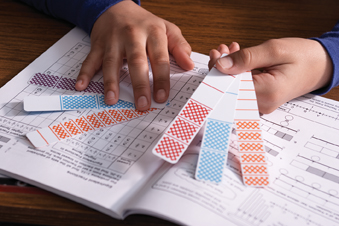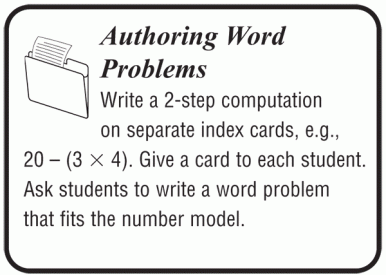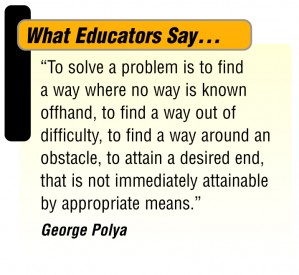Problem Solving in Every Lesson
Using research-based strategies to teach problem solving
The Hands-On Difference in Problem-Solving
Students using manipulatives are engaged in problem solving situations every day as they explore and discover the essential underpinnings of mathematical concepts.

Steps and Strategies for Problem-Solving
Students develop and apply a five-step problem solving model and discover that a variety of strategies may be used to solve the same problem.
5-Step Problem-Solving Model
1. Read and understand.
2. Find the question and needed facts.
3. Decide on process.
4. Estimate and compare.
5. Solve and check back.
Common Problem-Solving Strategies
1. Act it out.
2. Use a model.
3. Draw a picture.
4. Simplify
5. Make a table. Find a pattern.

Real-World Problem Solving
Real-world problems are used as the vehicle to introduce lessons. As students write word problems related to a computation, they develop understanding of the structure of a word problem. Understanding the relationship between elements in a word problem is essential to solving the problem.
